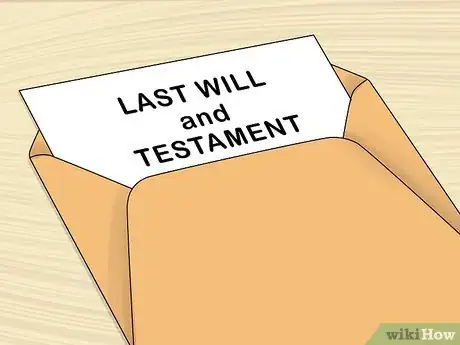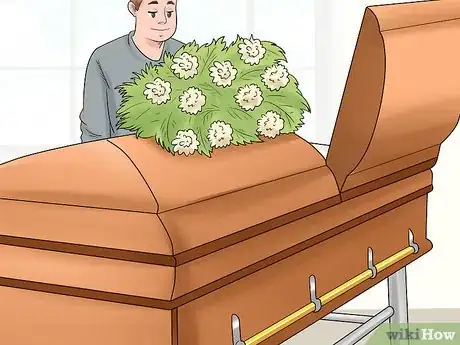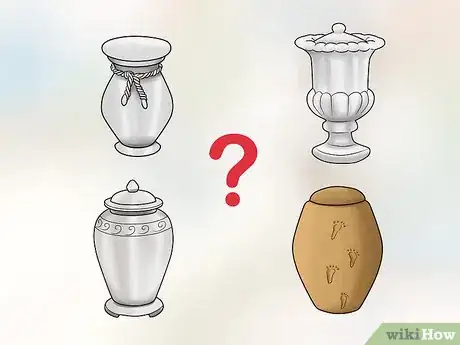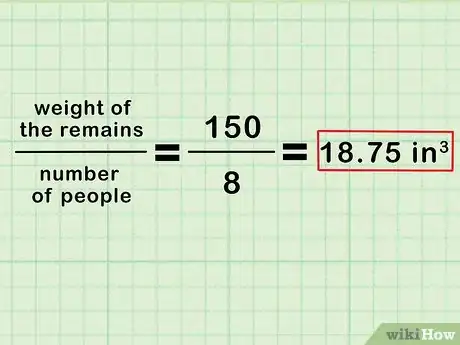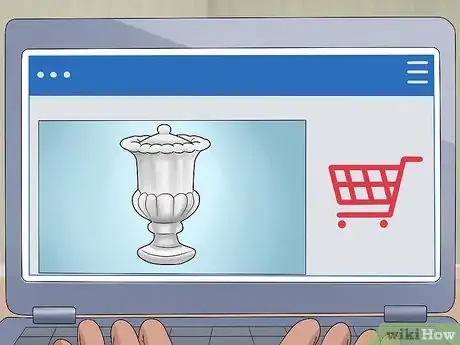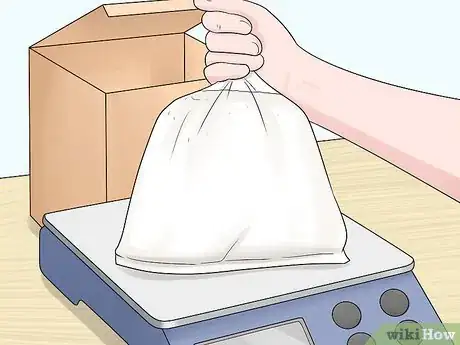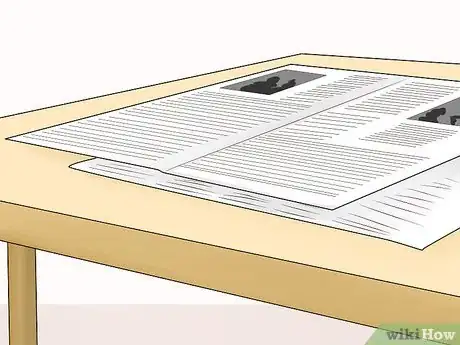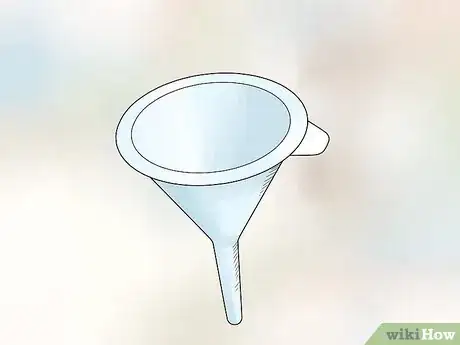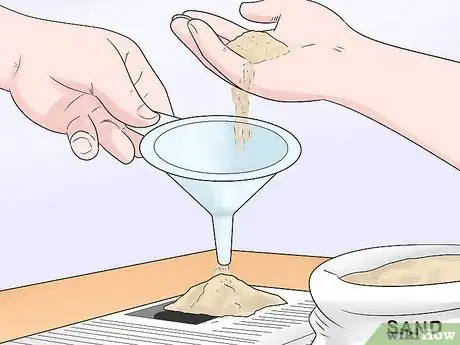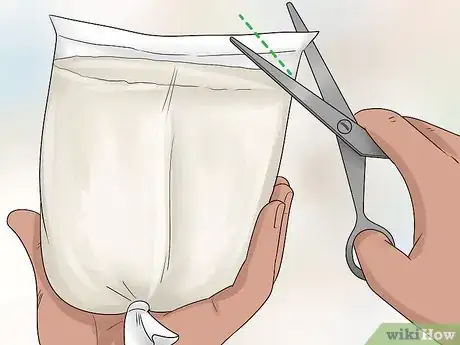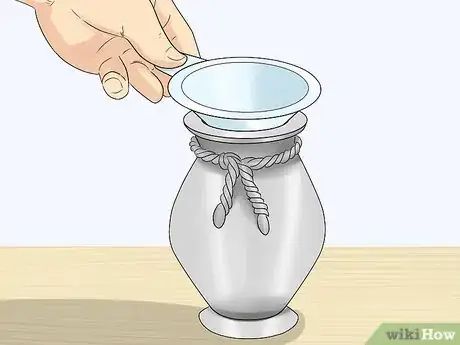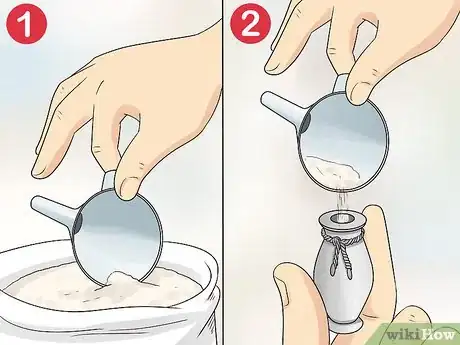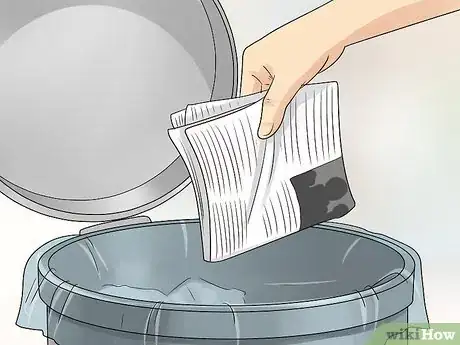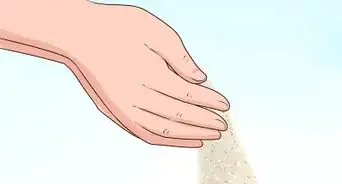This article was co-authored by wikiHow Staff. Our trained team of editors and researchers validate articles for accuracy and comprehensiveness. wikiHow's Content Management Team carefully monitors the work from our editorial staff to ensure that each article is backed by trusted research and meets our high quality standards.
There are 16 references cited in this article, which can be found at the bottom of the page.
This article has been viewed 23,649 times.
Learn more...
The loss of a loved one is always difficult, and dividing cremated remains is a challenge that you might not consider until you're faced with it. Whether you want to handle your loved one's cremated remains yourself or leave them in the hands of a trusted professional, there are a few different options available to you when it comes to dividing them.
Steps
Getting on the Same Page
-
1Respect the wishes of the deceased. Consider their religion and its tenets regarding common cremation or burial procedures. For example, division is not recommended by the Catholic Church, as they treat remains as a single body. And Islam is against the scattering of ashes, while Hinduism is not. If you're unsure of the deceased's wishes, talk amongst family and loved ones to try and get a better idea.[1]
- If the deceased left behind a Will, the Executor appointed within it has a moral duty to ensure that their wishes are respected. However, they are not legally bound to do so.
- If your loved one didn't leave any specific burial wishes behind, try and think of something they would like. There are many unique ways to store or scatter cremated remains, including sending them to the moon, turning them into a tattoo, or having them made into a coral reef memorial in the ocean.[2]
-
2Ask family members what their wishes are if the deceased does not have a Will. When it comes to the division of ashes without a Will, responsibility is in the hands of the highest ranking family member. The order, from highest to lowest rank, is as follows: surviving spouse; surviving children or grandchildren; parents of deceased; blood-related brothers, sisters, nieces, and nephews; blood-related uncles, aunts, or cousins.
- Disagreements between family members within the same category or ranking will prevent legal division until settling the matter in court.[3]
- The exception to this is if an Executor was appointed by the Will. In this case, they may decide to not consider the opinions of the deceased's relatives.
- Consider all of the benefits of division, such as giving everyone a chance to keep or spread them in their own unique way. Remember: grieving is always a difficult process, and everyone reacts differently. Don't push your wishes too hard—give everyone time to discuss what they feel is the best way to move forward, otherwise the final decision will be left to the highest ranking family member (or members) in the hierarchy.
Advertisement -
3Decide if there will be a funeral or viewing before cremation. If you're having a funeral service and/or viewing before cremating and dividing the remains, you'll want to rent a casket. Many people believe that having time to see the body through a viewing is the best way to give everyone a chance to say goodbye, so consult with your family and loved ones and come up with a plan.[4]
- If you're having a funeral or viewing prior to cremation, renting a casket is an affordable option.
- If you want to bury your loved one's remains in a cemetery instead of dividing them, you'll need to purchase a casket, as well as grave liner or a burial vault.
Purchasing an Urn
-
1Weigh the cremated remains using a pound scale. After receiving your cremated remains, they will be stored in either a polyethylene bag protected by a plastic box, cardboard box, or temporary plastic urn. Carefully remove the bag from its container and place it onto a pound scale. As a rule of thumb, 1 cubic inch (0.016 L) of urn space is necessary for every 1 pound (0.45 kg) of body weight.[5]
- For example, if the deceased weighed 150 pounds (68 kg), they will need an urn that is at least 150 cubic inches (2.5 L).
-
2Determine the kind of urns that you want. There are plenty of urn types to choose from. Make sure all family and friends keeping portions of the remains find the kind of urn that they would like. Display urns are ideal if you're going to be putting your remains in your home or other location. If you want to store your urns in a columbarium (public storage sites for funeral urns), you need to choose urn materials that are designed to last and the proper size for the storage niche.[6]
- Keepsake urns are typically in the form of jewelry or mini-urns.
- Display urns are typically made from ceramic, metal, marble, stone, wood, or glass.
- Columbarium urns are usually made from marble, glass, or brass.
- If you're scattering ashes, lightweight urns with removable lids are ideal. Land burials usually require biodegradable urns.
-
3Select urns with a combined size that accommodates the remains. There are 5 common urn types: extra small, small, medium, large, and extra large. Each category corresponds with a specific weight range. Use the weight of the bag to select urns within the appropriate size ranges.[7]
- Extra small urns are around 25 cubic inches (0.41 L), and small urns are between 26 and 50 cubic inches (0.43 and 0.82 L).
- Medium urns are between 51 and 125 cubic inches (0.84 and 2.05 L), and large urns are between 126 and 200 cubic inches (2.06 and 3.28 L).
- Anything over 200 cubic inches (3.3 L) is considered extra large.
-
4Divide the weight of the remains by the number of people. You can determine the number of remain containers you need by dividing the weight by the number of people who want keepsakes.[8]
- For example, if the deceased was 150 pounds (68 kg), you need 150 cubic inches (2.5 L) of space. To find out how many urns are needed for 8 people, divide 150 by 8, which leaves you with 18.75. This means 8 urns that accommodate 18.75 cubic inches (0.3 L) in total is sufficient.
- Keepsake urns are typically extra small [around 25 cubic inches (0.41 L)] and small between 26 to 50 cubic inches (0.43 to 0.82 L). Some are as much as 100 cubic inches (1.6 L).
-
5Find urns through an online retailer and have them delivered. You can purchase urns from online retailers, which gives you access to a much wider selection. And thanks to the Federal Trade Commission's Funeral Rule, funeral providers cannot legally refuse to use urns or caskets you purchase somewhere else or charge you an additional fee for accommodating these urns.[9]
- Urn vendors will usually offer the option of shipping directly to the funeral home or crematorium of your choice, and you don't have to be there when your urns are delivered.
-
6Ask a funeral home or crematorium to divide your remains. Do this after purchasing urns from these businesses or purchasing them online and having them delivered. You can ask the staff to transfer the ashes into the requested number of urns that you need for an extra fee.[10]
- Cremations typically cost around $2,000, although prices are as low as $1,000 without any extra services, such as division or memorial.
- Most cemeteries have columbaria on-site, which is usually an extra $1,000 for storage.
- Check the following resource to find services near you: https://www.bbb.org/.
Splitting up the Remains
-
1Place the cremated remains onto a pound scale if they are undivided. If you didn't have a funeral home divide your remains, you'll need to do so yourself. Most cremated remains are stored in a polyethylene bag, which is shipped in a plastic or cardboard box. Weigh the bag (without the plastic or cardboard box) directly on the scale. You need about 1 cubic inch (0.016 L) of space for every 1 pound (0.45 kg) of weight.[11]
- For example, if the deceased weighed 170 pounds (77 kg), you'll need a total of 170 cubic inches (2.8 L) to hold all of it. Keep this in mind when selecting both keepsake urns and larger urns so you can purchase 1 or more containers with enough space to hold the remains.
-
2Spread a newspaper along a flat surface. The surface should be steady and smooth so that it can hold your urn steady. Try and use a location with ample lighting and no breeze or wind from open windows.[12]
- Put on disposable latex, nitrile, or vinyl gloves.
-
3Purchase a funnel suitable for your urn. You can use a funnel purchased from a local department store or online vendor, or even roll up some paper to create a makeshift funnel. Whichever option you choose, make sure it's big enough that clumps of the remains won't clog it.
- For larger urns, choose a size that allows the funnel to sit comfortably in its top opening. In the case of keepsakes, select a size that provides a steady flow of remains into the top opening.
-
4Test your funnel by pouring sand through it. Hold your funnel steadily over the newspaper facing directly upward. Pour a small portion of sand through the funnel and into the opening. If it's not working, use a pair of scissors to widen the opening of the funnel.[13]
-
5Cut a diagonal hole across a corner of the cremation bag. The bag should have a tie on the top, leaving two corners on the bottom. Hold the tie in your hand and turn the bag upside down to get a better view of the corners and snip one of them.[14]
- If you're unsure of how big to cut the hole, make a small sized cut at first to be safe. If it doesn't pour enough at a time, cut it larger.
-
6Place the funnel tightly into the larger urns. The funnel should sit tightly into the hole without moving. If your funnel is too loose to tightly sit in the urn without moving too much, layer some paper towel around the rim of the urn's opening.[15]
-
7Pour the remains from the bag through the funnel slowly for larger urns. Try and pour as smoothly as you can to ensure that no remains get clogged. As the urn fills, lift the funnel slightly upwards to create more room for ashes.[16]
- Gently tap the funnel and your urn regularly to ensure proper settling of the ashes and prevent clogs in the funnel.
-
8Scoop a portion of the remains with the large opening of the funnel. Hold your keepsake over the newspaper with your thumb and index finger. Afterwards, you can begin scooping up the remains. After each scoop, position the funnel over the keepsake and jiggle it by the smaller opening so that the remains pour gently into the container.[17]
- Be sure to hold the keepsake over the newspaper to catch any remains.
-
9Dispose of any remains left on your newspaper. Trying to funnel any remains that fall onto the newspaper back into your urn(s) will create more of a mess than it's worth. Once you're done, fold the newspaper closed and carefully place it into the garbage.
- You can swap in a new piece of newspaper during the funneling process if you begin making too much of a mess.
-
10Seal the urn using an epoxy resin adhesive. If you want to seal your urn completely and have no plans of transferring them in the future, use epoxy resin adhesive to do so. Place a few beads along the lip of the lid and firmly place the lid on.[18]
- Epoxy resin adhesive is sold at most hardware stores.
- Once sealed, you can continue this process for any other keepsakes you have until your remains are evenly divided amongst them all.
- For a temporary seal, secure a single strip of tape along the top of the lid to hold it to the 2 opposing sides of the urn's opening. You can also wrap the entire container with plastic wrap to keep the lid secure.
Things You'll Need
- Urn(s)
- Keepsakes
- Cremated remains
- Pound scale
- Newspaper
- Large funnel
- Scissors
- Gloves
- Sand
- Epoxy resin adhesive
- Scotch tape
- Plastic wrap
Warnings
- Consult legal guidelines regarding division of remains in your country. Call local crematorium, funeral homes, or lawyers for any questions or concerns.⧼thumbs_response⧽
References
- ↑ http://www.cremation.com/learn-about-cremation/religion/
- ↑ https://www.mnn.com/lifestyle/responsible-living/blogs/things-do-cremated-ashes
- ↑ http://ecollections.law.fiu.edu/cgi/viewcontent.cgi?article=1138&context=faculty_publications
- ↑ https://www.funeralbasics.org/what-should-i-know-when-considering-cremation/
- ↑ https://kern.humdrum.net/memorials/info-on-cremation-urn-sizes/
- ↑ https://kern.humdrum.net/memorials/complete-info-on-different-types-of-cremation-urns/
- ↑ https://kern.humdrum.net/memorials/info-on-cremation-urn-sizes
- ↑ https://kern.humdrum.net/memorials/info-on-cremation-urn-sizes/
- ↑ https://www.ftc.gov/tips-advice/business-center/guidance/complying-funeral-rule
- ↑ https://www.senioradvisor.com/blog/2015/01/costs-of-cremation/
- ↑ https://kern.humdrum.net/memorials/info-on-cremation-urn-sizes/
- ↑ https://youtu.be/N3QqhtK3a30?t=1m20s
- ↑ https://youtu.be/cFh0ONtAcf0?t=1m6s
- ↑ https://youtu.be/N3QqhtK3a30?t=1m44s
- ↑ https://youtu.be/N3QqhtK3a30?t=1m32s
- ↑ https://youtu.be/N3QqhtK3a30?t=1m50s
- ↑ https://youtu.be/cFh0ONtAcf0?t=1m20s
- ↑ https://youtu.be/N3QqhtK3a30?t=2m7s
